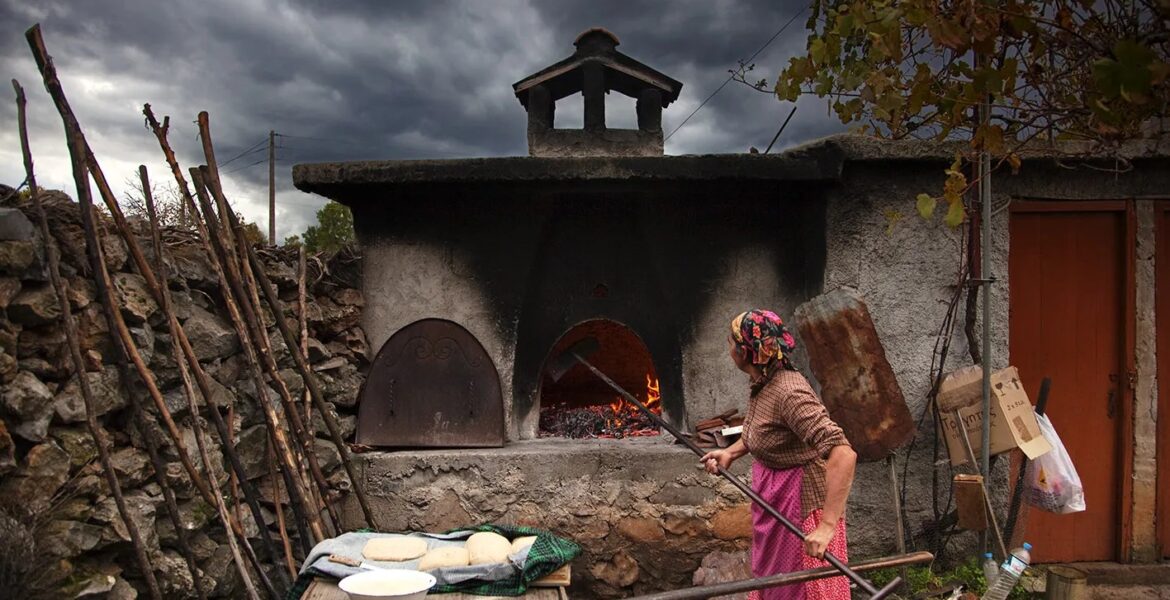Life in an authentic place, built at an altitude of 800 metres...
Leonidio and the wider area of Kynouria have always been isolated places, and as recently as the middle of the 20th century, the easiest way to get there from Athens was by sea. So it is no coincidence that on the slopes of Parnon, there are some of the most authentic villages in Greece.
One such is the Tsakonian village named Vaskina (or Voskina).
To get to Voskina, one will follow an uphill road northwest of Leonidio. The village is located on a plateau, 15 kilometres away from the coastal town of Arcadia.
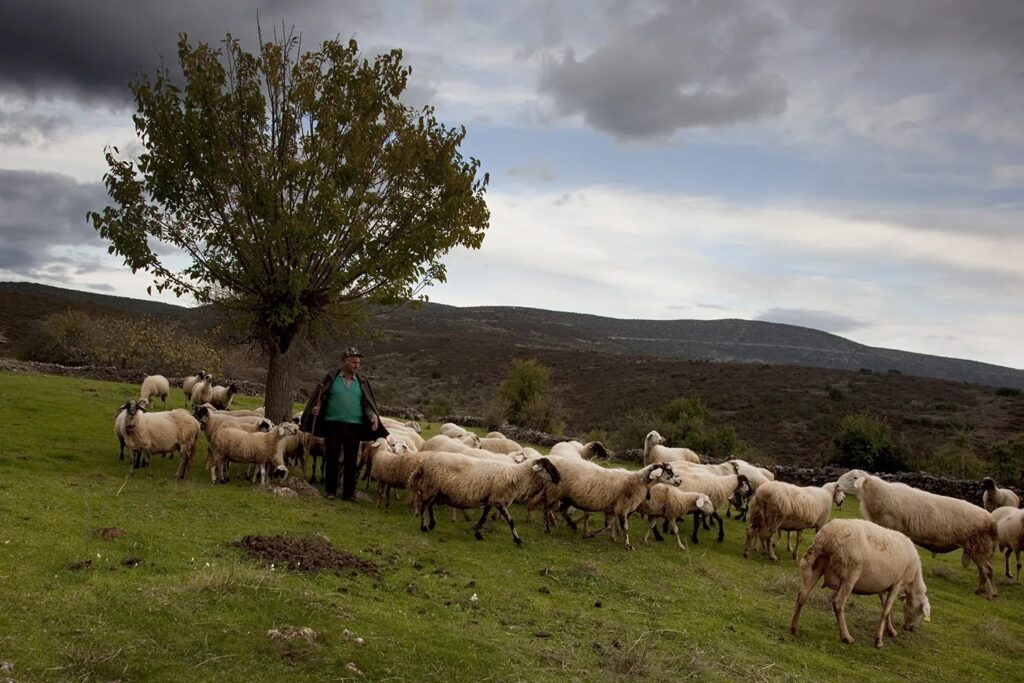
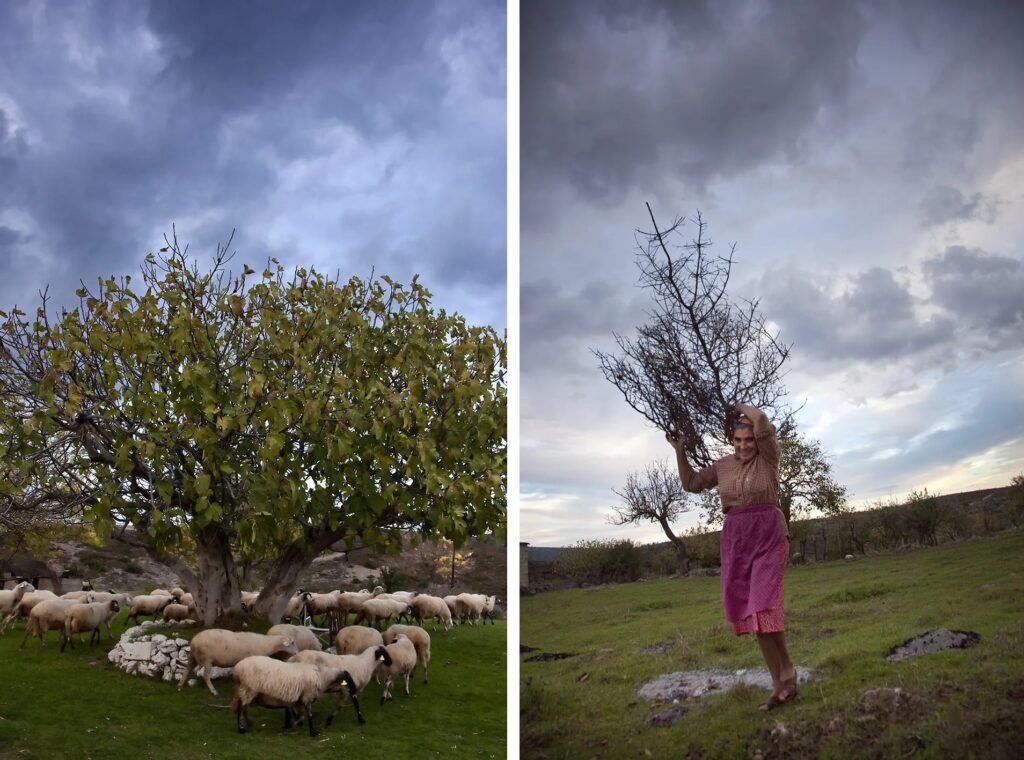
The route to Voskina is not the easiest, but it is interesting. The roads are winding, and you will drive between the impressive Tsakonic rocks, while at some points, you will have a panoramic view of the Leonidio plain.
An isolated and wild place, Vaskina is built at an altitude of 800 meters. The village is divided into two settlements, Ano Vaskina and Kato Vaskina. In the upper settlement, two vaulted Mycenaean tombs were found in the 1930s, as well as pottery from the same period and signs of an extensive settlement. Something that testifies to the habitation of the area since ancient times.
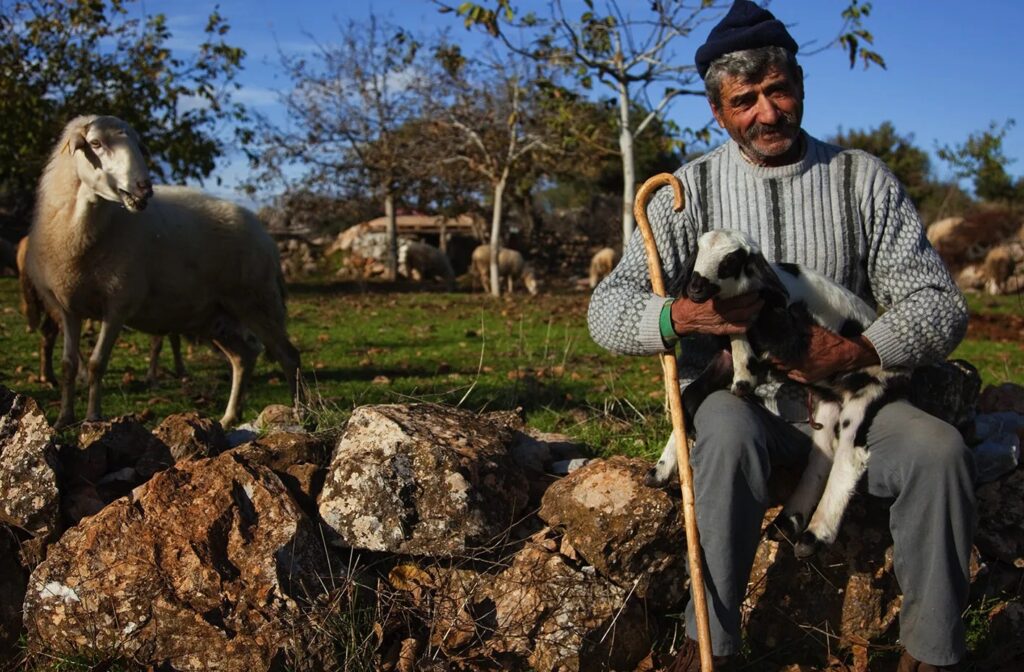
According to what we know, the area was inhabited again during the years of the Turkish occupation, and then the name Vaskina (or Voskina) appeared—a typical Tsakonian village that went through a period of prosperity and decline. Today, the permanent residents are few, and most continue the profession of their ancestors, that is, cattle breeders. They raise their sheep and goats in stables and corrals around the village and live off them. The area, anyway, is characterised by extensive pastures and an environment that lends itself to the production of excellent thyme honey. Of course, many pastures have been converted into photovoltaic parks in recent years.
As is the case with other small parts of the Greek countryside, the highlight of life in the village is the summer festivals, as visitors return from the big cities and generally more people visit it. In Vaskina, this happens on July 19 and 20 for the feast of the Prophet Elias. Another celebration is at the end of August, called " Shepherds' Day ". Goats and lambs are roasted in large wood-fired ovens, and the hospitable inhabitants offer plenty of wine, sourdough bread and other delicacies.

What is certain is that whoever is at these celebrations will understand that the Vaskinians - permanent residents and non-residents - love their place and their Tsakonian heritage. After all, it is no coincidence that in recent years, they have also established the annual commemoration of the deceased Vaskinians on the last Sunday of August.
The particularity of this ceremony lies in the fact that the memorial prayer is sung in the Tsakonian dialect by Tsakonian priests and singers, and there is a large participation. An event that is not only religious but also acts as a collective element of identity for the Tsakones and brings them closer to the ancient language and the specificity of their community.
Agios Nikolaos Sintzas appears to be emerging from the imposing cave where it was formed. Photo: Pericles Merakos
Vaskina has no special attractions, but at a distance of about 25 kilometres or 45 minutes by car, there is a religious monument that is definitely worth visiting if you are in the area.
Perched at an altitude of 500 meters in an inaccessible area of Parnonas full of steep reddish rocks, the Monastery of Sintza seems to be stretching its "head" out of the natural cave in which it has been carved and shaped.
The monastery that has stood there for hundreds of years is quite similar to other more famous monasteries built on steep rocks, such as the Monastery of Kipina in Tzoumerka and Panagia Hozoviotissa in Amorgos.
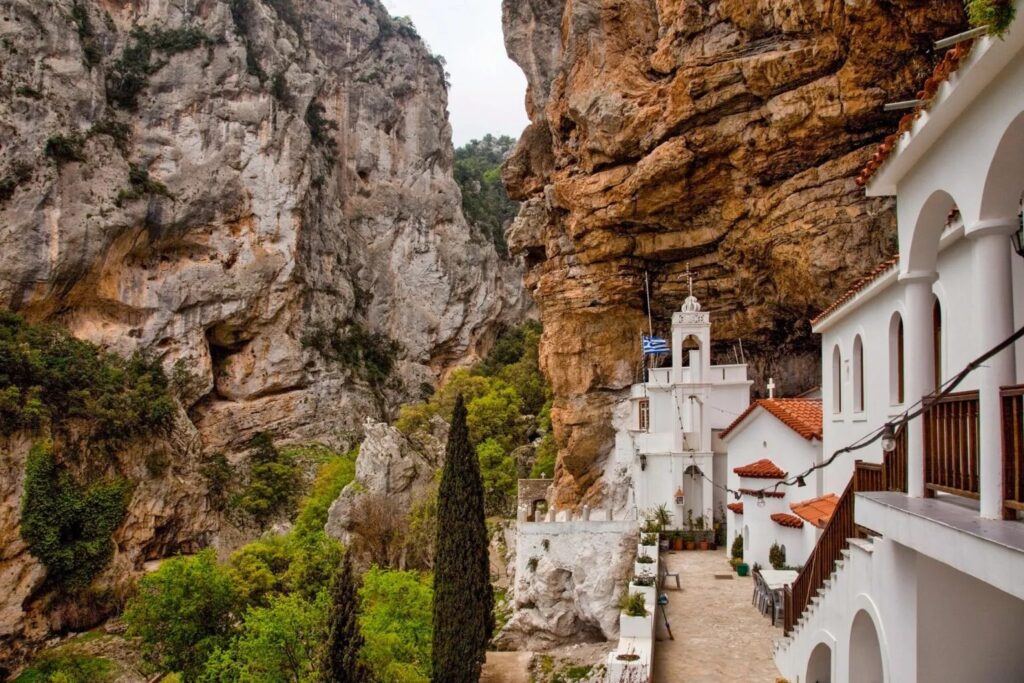
The view you enjoy from the monastery reaches all the way to the sea. The best time to come here is in the spring when the fertile plain of Leonidio has acquired wonderful colours.
Some tips and information for a trip to Parnon

It is worth coming here with a sturdy car, as Parnonas has some of the nicest routes for driving enthusiasts.
The shortest way to get to Mount Parnon is from the Tripoli-Sparti highway, but if you are in the mood for a tour, a very beautiful route is climbing the winding road that takes you from Leonidio to Kosmas. The car ride – higher and higher on the mountain, deeper and deeper into the ravine – is delightful.
It is a green mountain, so spring is the best time to come here. But summer is also an excellent time when there are more people in the villages.

Some mountain villages with accommodation infrastructure are Kastanitsa and Kosmas in Arcadia and Vamvakou in the part of the mountain that belongs to Laconia.
There are various theories about the origin and meaning of Tsakonia and Tsakones. One of them states that it means a mountainous and difficult place, another that it is a corruption of the word Lacones, while another considers that the name comes from the Tzekones, an elite body of the Byzantine army.

Parnonas is home to the only cedar forest in Europe, which covers an area of more than 740 acres. The easiest way to get there is from the Monastery of Malevi, near the village of Agios Petros.
READ MORE: From Samarina to Florina – A mountainous weekend in Western Macedonia.

